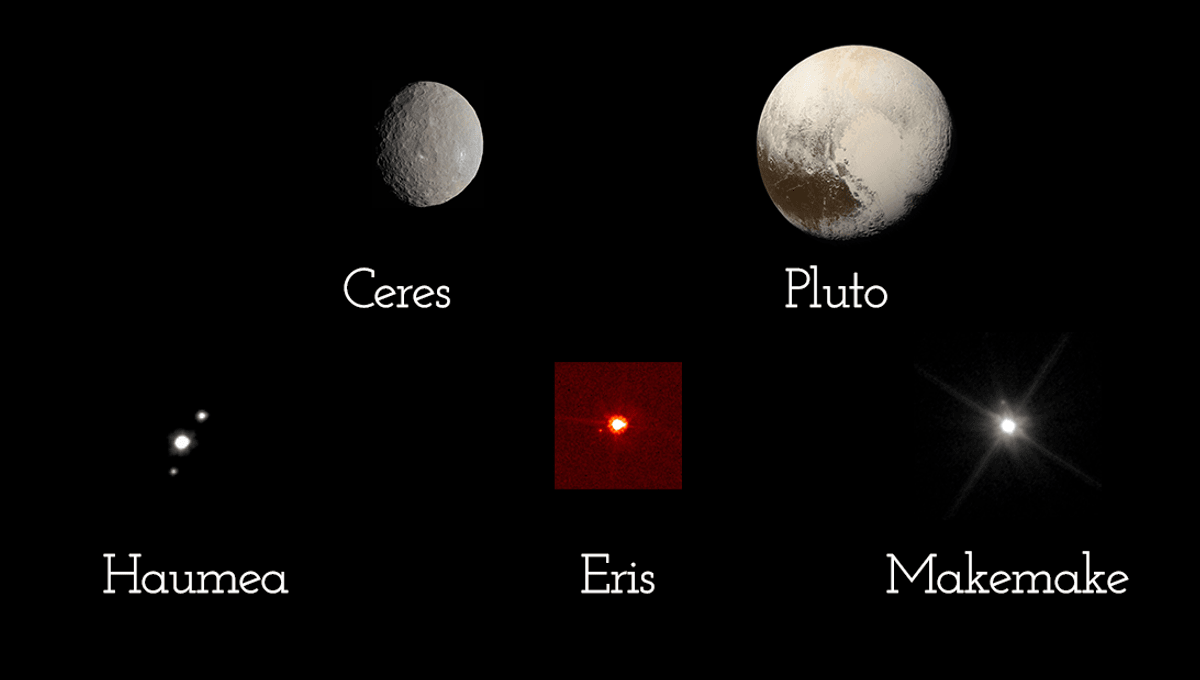
In 2006, the International Astronomical Union voted on a new definition of what counts as a planet. This has since made a lot of people very angry; whether it was a bad move remains to be seen. The definition was seen as a demotion of Pluto from the category of planet to the category of dwarf planet, but it also meant that celestial bodies considered to be minor suddenly became popular. And that is cool.
Kids in school are learning about the eight planets and the (currently) five dwarf planets. In order from the Sun, we first find Ceres – the largest object in the asteroid belt. Ceres, too, was considered a planet for about 50 years before getting demoted. Then there is Pluto, the king of dwarf planets. Following Pluto is Makemake, with a diameter of 60 percent of the former planet and one moon. And then there is Haumea, with two moons and a mass about one-third of Pluto’s.
But the object that caused the need for a new planet definition and a good 18 years and counting of debate is Eris. Aptly named after the Greek goddess of strife and discord, Eris is more massive than Pluto. When it was discovered in 2005, suddenly it became clear that the Solar System couldn’t keep having nine planets. Something was going to change.
What makes a dwarf planet?
The requirements for a planet are as follows: the object needs to go around the Sun; it needs to be big enough to have pulled itself into a roughly round shape; and it must have cleaned its orbit of debris. Dwarf planets have got the first two sorted, but not the third one. That condition can be estimated in a variety of ways, including the ratio between the mass of the celestial body and the rest of the matter in its orbit. Planets have ratios 100,000 times bigger than dwarf planets.
The person who proposed the term dwarf planet is Alan Stern, the principal investigator of New Horizons, the mission that visited Pluto and Arrokoth. Stern wanted subcategories of planets, such as classical, dwarf, and satellite planets. The latter is for those large moons that are planet-like, such as our own. The definition that was approved instead moves Pluto into a distinct category, and Stern has been against it ever since.
Are we going to get more?
Most likely! The International Astronomical Union has not accepted any new dwarf planets, but there are several that have been proposed, such as Quaoar, Sedna, Orcus, and Gonggong. There are questions about their shape (condition number two), but the same might be said about Haumea. In 2017, observation of the dwarf planet revealed it to be a lot more squished than originally thought.
There’s been no discussion yet as to whether Haumea will be kicked out and another brought in, or if the definition of planets and dwarf planets could be changed again. A proposal at the latest International Astronomical Union General Assembly saw the definition of a planet refined: after all, the current definition doesn’t include the over 5,000 confirmed exoplanets that we have discovered in the universe.
It’s hoped the new definition will be discussed at the next General Assembly in Rome in 2027. It changes the first two requirements for a planet: orbiting any star or brown dwarf, and having a mass higher than 1023 kilograms. Pluto and Eris remain excluded, but maybe it could lead to a new definition for dwarf planets based on something easier to measure than shape.
Source Link: Do You Know How Many Dwarf Planets Are In The Solar System?